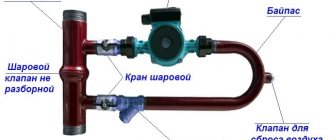Causes of ptosis of the upper eyelid
The term comes from a Greek word and means “overhanging or falling.”
The low location of the movable skin fold reduces the field of vision or completely disrupts it on the altered side. In this case, the anomaly can be congenital or acquired. It is considered normal if the cornea is covered by approximately 0.5-2 mm. If a muscle is atrophied or weakened, pathology occurs. Correct diagnosis allows the doctor to choose an adequate control strategy using therapeutic or surgical methods. The most common are:
- weakening of muscles;
- age-related gravitational changes;
- nerve ending paralysis;
- endocrine and other diseases;
- disruptions in the nervous system.
Among the reasons are diabetes mellitus and incorrect Botox injections.
Characteristic symptoms of eyelid ptosis
Overhanging mobile skin folds are observed at different stages of the disease. Externally, the disorder is expressed by uneven size of the eyelids, swollen skin, and a “sleepy” appearance. In addition, compensatory signs arise, such as the habit of throwing the head back, early wrinkles on the forehead, and the appearance of a raised eyebrow effect. The process of blinking is also difficult, which leads to increased fatigue and increases the risk of infection of the organs of vision. It is impossible to self-medicate in such cases; it is necessary to prescribe an examination, the purpose of which is to determine the causes of drooping of the upper eyelid in one eye and begin treatment only with strict adherence to the recommendations of a specialist.
The normal indicator is the distance from the edge of the skin fold to the central point of the pupil. It is assessed when the patient is examined by a doctor. Double vision and squint clearly indicate damage to the oculomotor nerve. Often there is a whole complex that combines ptosis and retraction of the eyeball. It is useless to solve problems one by one; the subject is prescribed an appropriate course of procedures. In the absence of results from conservative treatment, specialists resort to surgical correction.
Prevention
To avoid exposure to ultraviolet radiation, it is recommended to carry out welding work in a protective mask. The product is equipped with a special glass that acts as a light filter. Thanks to this, polarized radiation is blocked and the organs of vision are safe.
If you happen to work with a welding device, then initially think about observing safety precautions. Every master who has cooked without a mask knows how sore his eyes are afterward. Exposure to welding sparks for too long can even lead to complete loss of vision.
In some cases, surgery is necessary. If the cornea is damaged, it is transplanted.
Additionally, watch an interesting video about why you should not look at welding. Learn about safe distances, prevention and radiation hazards.
Classification and stages of development
Like other pathologies, this one has its own characteristic features that make it possible to divide the total mass according to its external manifestation and prerequisites for its occurrence.
Neurological
It is also called neurogenic, since the root causes are disruptions in the central nervous system. In the vast majority of cases, the violation is observed on one side. If there is no clear functioning of the frontal and ocular muscles, then pathology occurs. These are the main causes of ptosis of the upper eyelid in adults. In this case, the bilateral appearance indicates a previous heart attack, and when the oculomotor nerve is damaged, pupil dilation is observed, and eye mobility is impaired. All cases are purely individual; the problem may spontaneously disappear when the affected area is stabilized. If treatment is necessary, the method is selected individually.
Myogenic blepharoptosis
Develops with myasthenia gravis, ocular myopathy, as a result of local or systemic muscle damage. There is also a toxic form associated with poisoning from lead or other heavy metals or their salts. Impairment of the motor function of the eye is possible, often accompanied by a decrease in the tone of the facial muscle tissue. How to correct ptosis of the upper eyelid in this case will become clear after a thorough detailed examination.
Mechanical view
Occurs if muscle function is hampered by scar formation, wearing lenses, or due to a tumor or injury. Sometimes only supportive procedures are required to stimulate natural regeneration. If the damage is very severe, then surgery is recommended.
Aponeurotic
This type is also called senile, when a person experiences stretching of muscles and ligaments and their weakening. In other cases, postoperative complications, cataract removal, severe infections, and injuries can trigger the disorder. Development occurs on both sides, but one is more affected. The congenital form is rare and occurs equally in men and women. Patients note a gradually progressive drooping of skin folds. To remove ptosis of the upper eyelid, surgical correction is indicated in most cases; the prognosis is favorable.
Pseudoptosis
In fact, this is a purely cosmetic problem. It is characterized by excess skin, which creates a severe fold that interferes with normal vision. Often it occurs in combination with age-related changes. To promptly refuse unnecessary or incorrect surgery, a comprehensive diagnosis is important. Treatment depends on the cause of the abnormality.
Traumatic blepharoptosis
When determining this type of disorder, experts recommend waiting 6 months before performing correction, since cases of spontaneous resolution of the situation are not uncommon. The etiology includes many factors and is diagnosed after the swelling has resolved. During the healing process, scarring and lagophthalmos are possible. If after time the condition does not improve, then muscle resection is performed. This is the best option to cure ptosis of the upper eyelid.
First aid
According to statistics, the degree and depth of damage to the cornea is influenced not by the type of traumatic impact, but by the duration of its contact with the surface of the eye. That is why everyone, without exception, needs to know basic first aid measures.
Important! A quick and correct reaction is especially important in cases where there is a thermal or chemical burn to the cornea of the eye.
What needs to be done to stop or reduce the influence of traumatic factors
:
- rinse the eye with a stream of cool, clean water, preferably saline, but regular tap water will do;
- remove foreign bodies from the surface of the eye, especially if they are hot metal particles (molten polymers should not be touched);
- Place a gel or ointment with an analgesic effect in the conjunctival sac to relieve pain and prevent the development of shock.
In the first hours after the patient’s admission to the hospital, doctors must rinse the lacrimal canals and remove foreign bodies embedded in the membrane of the eye. To prevent infection, chemically neutral antiseptic solutions are used to wash the eye.
Important! It is strictly forbidden to wash off chemical reagents from the surface of the eye with other chemicals, for example, acids and alkalis and vice versa, as this can lead to additional damage. Experts note that treating a combined corneal burn is many times more difficult than a specific type of burn.
Features of congenital pathology
In this case, part of the visual field is blocked, which causes dangerous complications to develop. In children of preschool and primary school age, a similar problem leads to delayed mental development, as well as the formation of complexes. There is a very high probability of progression of amblyopia, heterotopia, astigmatism, and binocular vision impairment.
Depending on the severity of the pathology and the individual characteristics of the patient’s body, a treatment regimen using conservative therapy is developed. If there is no result or the changes are too large, doctors prescribe surgery. Correction is a necessity, otherwise the omission leads to distortion of visual images in the child’s brain. The congenital form in the vast majority of cases will be transmitted from parents; a direct connection with a chromosomal malfunction is possible. Myasthenic ptosis is considered a variety, which is more visible externally in the evening; a characteristic symptom is quickly occurring fatigue of the facial muscles, especially in the area around the eyes.
Autoimmune diseases, intrauterine disorders of fetal formation, and tumors increase the risk of developing the disease. Congenital ptosis is also diagnosed in Duane and Horner syndromes; concomitant symptoms are narrowing of the palpebral fissures, deficiency of tear fluid, and deterioration in the quality of twilight vision.
Characteristics of acquired ptosis
The manifestation of the disease is often directly related to age-related changes in the body. In this case, the process proceeds unevenly, first one fold falls, then the second, and asymmetry may remain. Treatment of this type of disease is carried out exclusively by surgery. It is advisable to seek help at the initial stage. If complications arise from the excessive use of botulinum toxin drugs or the technology of its administration is violated, the muscles do not ensure the outflow of lymph, which provokes its accumulation, leading to large-scale edema.
The problem may arise due to individual intolerance to the drug and the unprofessionalism of the cosmetologist. In this case, it is necessary not only to correct the consequences, but also to select high-quality care products that will help speed up regeneration and stop age-related changes. A specialist will tell you how to get rid of ptosis of the face and upper eyelid after a full examination and tests. You should not rely on chance, since with advanced pathology, vision is impaired and strabismus occurs.
What not to do
It’s not enough to know what to put on your eyes after welding; you also shouldn’t forget about prohibited activities. This will help to avoid unpleasant consequences in the future.
Basic prohibited recommendations:
- In no case should you rub your visual organs too hard;
- no need to rinse your eyes from the tap;
- immediately after receiving damage there is no need to use folk remedies;
- Is it possible to put Lidocaine and other drops into the eyes after welding? It is better not to do this; you should first consult a doctor.
If after welding there are unpleasant feelings in the eyes, pain, swelling, then you should immediately consult a doctor. However, it is not always possible to quickly visit an ophthalmologist; in this case, first aid must be provided. If severe pain is noted, you can drip Novocaine for the eyes after welding. This will alleviate the condition, but for a few hours. And you definitely need to get to an ophthalmologist as soon as possible, only he will be able to determine the extent of the damage, and then select the most appropriate treatment.
Complications
The disease is not life-threatening. In most cases, the consequences are psychological in nature, provoking the emergence of complexes, the development of shyness, internal constriction from the awareness of a defect in appearance. A narrowing of the visual field and headaches also begin.
It is more difficult for children; progression of amblyopia and other disorders, including binocular vision, is possible. The outlines of objects are distorted, which causes partial disorientation in space. In severe forms, there is a high probability of developing a myasthenic crisis.
If the causes of facial ptosis and drooping upper eyelid are found, the doctor will tell you what to do, how to fight and remove the main symptoms. This will not be difficult, since the actions will be targeted, and the methods will be clearly selected and comprehensive.
Symptoms of a corneal burn
The severity of the signs of the disease depends on the degree of retinal burn. There are 4 categories of lesions:
- Mild degree. A person who has seen enough of welding complains of burning and itching of the eyelids. The cornea becomes cloudy, and non-infectious conjunctivitis develops.
- The second degree is accompanied by severe pain. The victim's eyes are watery and he cannot look at the light. Plaque on the conjunctiva and ulceration of the cornea are visually detected.
- Severe degree. There is pronounced clouding of the cornea and swelling of the eyelids. Complaints of blurred vision, cutting pain in the eye sockets and forehead. Often there is a feeling of sand in the eyes.
- Extremely severe. The pain is very pronounced. Complete blindness develops, the cornea loses color. The tissue of the eyeball begins to die. Acute pain prevents the opening of the eyelids.
Diagnostics
It is worth considering that the most effective measures can be taken in the early stages of diseases. Unfortunately, at this stage it is very difficult to notice changes. You should be wary:
- visual enlargement of the skin fold;
- eyelid asymmetry;
- narrowing of the field of view;
- rapid fatigue of facial muscles;
- the desire to tilt your head back to examine a small detail in detail;
- the appearance of longitudinal wrinkles on the forehead.
If you suspect the development of pathology, you should contact a specialist to clarify the diagnosis. First of all, it is determined whether the anomaly is congenital or acquired. Next, an examination is carried out to determine the degree of prolapse. In case of vision problems, it is necessary to evaluate how much the field has narrowed, measure the eye pressure and examine the condition of the fundus. The next step is to check muscle tone and blinking function, and the quality of binocular vision.
Among the examinations that are prescribed:
- X-ray;
- MRI;
- Ultrasound;
- electromyography.
In some cases, with an unclear etiology, consultation with a neurosurgeon, endocrinologist, or neurologist may be necessary. The disease develops gradually.
1st degree
The upper eyelid hangs over the cornea or covers a third of the pupil. At this stage, there are quite a few options for how to treat eye ptosis. Basically, they are of a conservative direction, since there is no serious threat to visual acuity, the main concern is the cosmetic effect.
2nd degree
At this stage, half to two-thirds of the pupil closes, pain, headache, and overstrain of the muscles of the face and neck appear. Visually, the violation is clearly visible and causes not only psychological, but also physiological discomfort.
3rd degree
At this stage the pupil is completely closed. Surgery and long-term rehabilitation, including several stages, are required. The first step is to identify the causes, both the main ones and the accompanying ones. Only then can treatment be prescribed, constantly monitoring the patient’s well-being and the process of restoration of visual functions.
We recommend
GHC Placental Cosmetic - 3-D modeling mask with placenta hydrolyzate
Bb Laboratories – Regenerating placental-hyaluronic mask
Bb Laboratories – Anti-aging lifting cream
Bb Laboratories – Lifting patches
Reason to see a doctor
If you cannot eliminate pain in the eyes using traditional methods, you should see a doctor. In addition, you should contact a specialist in the following cases:
- after welding work, vision decreased noticeably;
- the eyes are too red or there is redness of the cornea;
- the feeling of sand in the eyes does not go away for more than 2 days;
- after a burn to the mucous membrane, body temperature increased or general health worsened.
It is worth seeing an ophthalmologist even if the treatment prescribed by the doctor does not help within 3 days. The doctor may change the treatment regimen or supplement it with other medications.
It is necessary to immediately consult a doctor if an eye injury is observed in a child. Parents should ensure that children are not in the vicinity of welding work.
How to treat ptosis of the upper eyelid
There are several methods that are used depending on the causes of the disorder, the degree of its development and the individual characteristics of the human body. When congenital pathology is detected in the early stages, if vision is not impaired, comprehensive prevention is sufficient. If the problem is caused by Botox injections, then experts recommend waiting until the effect of the botulinum toxin wears off. In any case, the treatment regimen is developed individually.
Conservative treatment
Physiotherapeutic procedures are quite effective in eliminating blepharoptosis:
- massage;
- electrophoresis;
- UHF;
- microcurrent therapy.
The complex contains vitamin B and neuroprotectors. Gymnastics for the eyes is effective if the eyelids droop on their own due to aging of the body. A well-chosen program will help tighten muscles and restore them to their former tone.
Cosmeceuticals
With slight sagging tissue, you can completely get by with cosmetics. But they must be highly effective, not cause allergies, and have a tightening effect. Innovative original injection preparations, creams and serums made in Japanese and Korean from the RHANA Corporation, containing unique biologically active substances, allow you to stop the processes of premature aging, tighten and strengthen tissues, restore elasticity to the epidermis and lift the eyelid in a natural way.
- Patches for lifting and moisturizing with kinetin.
- Anti-aging lifting cream for the eye area “24 hours”.
Surgical method
Surgery is prescribed only in advanced stages, if the quality of vision is impaired or the consequences of injury interfere with normal work. To achieve the effect, the muscle is cut or shortened slightly. Rehabilitation lasts 3-4 weeks, under the supervision of a surgeon. The method allows you to completely get rid of pathology for life.
Types of postoperative complications
The most common is an allergy to local anesthetics. Swelling or the effect of incomplete closure of the eyelids may appear. Bleeding and infections are rare. Since the procedure is performed under local anesthesia. There are no serious consequences from anesthesia either. Sometimes keratitis is diagnosed, then the use of artificial tears and special gels is recommended.
Prevention
There are no targeted actions; indirect actions include regular examinations with an ophthalmologist, the use of cosmetic care products with a lifting effect for the eyelids and skin around the eyes, self-massage and maintaining the general tone of the body.
The use of folk remedies
When considering what you can drop into your eyes after welding, do not forget about folk remedies. They can be used independently, but you should still consult your doctor first. It is better to use for mild damage, because they certainly will not help for moderate and severe damage, and sometimes they can even cause complications.
So what should you put in your eyes after welding? At home you can use homemade drops and lotions:
- Potato . You can make a mask from the tubers; it will relieve pain and relieve swelling. Raw potatoes should be rubbed through a fine grater. The resulting pulp should be placed in gauze, wrapped and applied to closed eyelids. You need to keep it for 30 minutes.
- Linden tea . This remedy relieves swelling, redness, burning sensation, and itching. For cooking, it is better to use bags of raw materials. They should be brewed first and then applied to the eyes.
- Aloe . This plant has strong medicinal properties. The juice should be squeezed out of the leaves and mixed with natural honey. This combination must be instilled into each eye, 1 drop.











